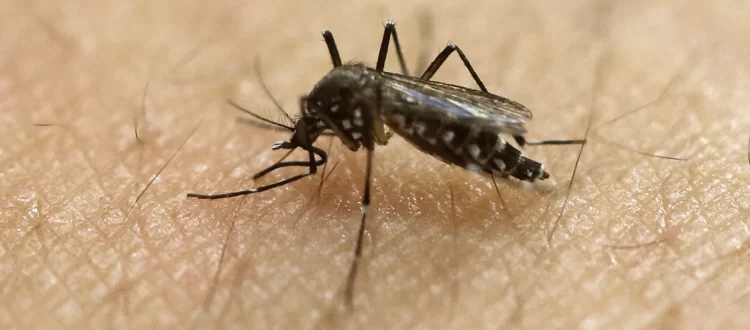To fend off aggressive female mosquitoes, thousands of sterile males are being released
In Los Angeles, those who wage war on mosquitoes are adding a weapon to their arsenal: more mosquitoes. The Greater Los Angeles County Vector Control District on Thursday launched a pilot program to release tens of thousands of irradiated, lab-raised mosquitoes into the local environment. These mosquitoes are all male and have been sterilized by the radiation, so the hope is that they will find wild female mates and impregnate them with dead-end sperm, rendering the resulting eggs worthless.
The target is a particular species, Aedes aegypti. The insects, which began to populate Los Angeles County in 204, have evolved to hone in on one thing — you. “Thousands of years ago, a strain of Aedes aegypti moved in close to people and started to specialize to live near houses and bite people,” said Daniel Hahn, a professor in the University of Florida’s Department of Entomology and Nematology. “They’re characterized as aggressive nuisance biters because they’ll bite you all day long.”
Aedes Aegypti thrive in backyards and make their homes in small containers like bottle caps and dog bowls. They can carry worrisome diseases like yellow fever, Chikungunya, Zika and dengue. “We know our residents are suffering,” said Susanne Kluh, the general manager of the Greater Los Angeles County Vector Control District, which serves 6 million people and has more than 90 full-time staffers.
The district on Thursday released about 20,000 sterile male mosquitoes, dyed to appear fluorescent under a black light, as part of its final pilot program test. Male Aedes Aegypti mosquitoes don’t bite, so experts say the program poses near-zero risk to humans. Next month, the district plans to release seven to 10 sterile mosquitoes for every wild male they believe is living in the target region, the Sunland-Tujunga area of L.A. That could be up to 60,000 mosquitoes per week.
The strategy is an example of the ways humans are deploying novel technology to fight the spread of invasive mosquitoes and the diseases they can carry, as climate change, global trade and urbanization propel the pests into new territory. “They’ve evolved specifically to exploit humans as their hosts, and so we are constantly in an arms race against them,” Hahn said.
An expanded range for aggressive mosquitoes
The Aedes Aegypti mosquito is not native to the United States but has been in some regions for hundreds of years. They have even played central roles in American history: In 1793, they forced some federal officials to flee Philadelphia, when the city was the seat of the U.S. government, because of an outbreak of yellow fever.
In recent years, researchers have warned that higher temperatures due to climate change will broaden the species’ range. That appears to be what happened in Southern California. The state recorded its first two cases of locally acquired dengue fever last year, which meant local mosquitoes were transmitting the virus.
“Everybody always said, well, our weather isn’t suitable, but you know, the mosquitoes adapt and our weather has changed,” Kluh said. “We get more moisture in the summer, and people create these ideal little moist mini climates in their backyards, with lush plants and everything.”
The region has also seen urban and suburban sprawl, which has expanded habitat for Aedes Aegypti.
Fighting mosquitoes with mosquitoes
The weaponized mosquitoes were bred in a Kentucky laboratory but developed from eggs sourced from the L.A. area. Each week, the vector district plans to hatch mosquitoes in tiny insect dorms then give them a zap of radiation from a specialty machine. Once released, the irradiated mosquitoes will fly only about 150 meters, Kluh said.
By Evan Bush
https://www.nbcnews.com/science/environment/los-angeles-releasing-mosquitoes-to-fight-mosquitoes-rcna150483




